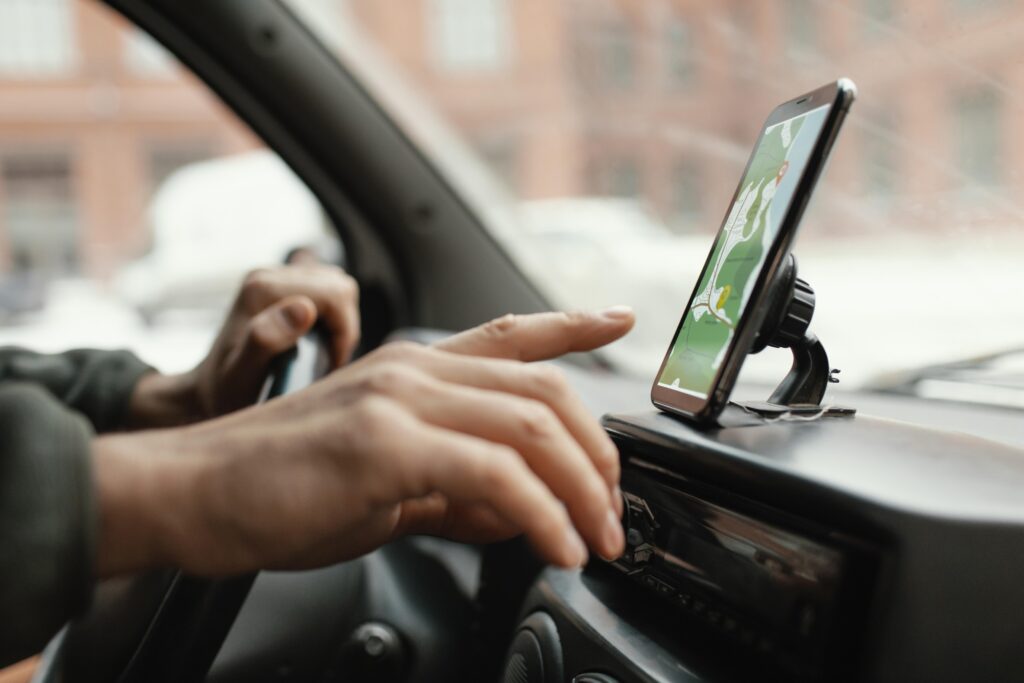Ever wondered where your fleet vehicle goes throughout the day?
Whether you’re worried about theft, want to track driving, or keep tabs on your fleet, a GPS tracker could bring you peace of mind. All you have to do is attach a small, discreet device to your fleet vehicles, and you’ll get real-time updates on their location and speed.
Advanced features like geofencing and route history make it easy to monitor your fleet vehicles. It’s not just about knowing where your fleet is; it’s about knowing it’s always safe and in control.
If you are ready to move your fleet security to the next level, read on to find out how easy and effective GPS tracking can be for you.
1. Install the GPS Tracker
Before you install a GPS tracker device in a fleet, there is one crucial decision you need to make: the tracking device to use. Whether your business has a few cars or a fleet, think about what you might need: tracking the car in real-time, setting geographic zones, or controlling the driver.
Once you have identified the best GPS car tracker device for your fleet, you decide between calling a professional to install it or installing it on your own.
If you decide to install the tracker yourself, remember that most of the devices are designed to be connected to the running circuit of cars, and usually, no additional intervention is required.
The specifics of the GPS trackers are that they are usually shipped with manuals that help configure the device. However, if you do not want to go through the installation process on your own, professional installation is the ideal solution.
Once installed, you can conveniently monitor the location and routes taken by your fleet, as well as assess driving behavior, all at a glance. This solution not only enhances the security status of the vehicles but also ensures they are closely monitored.
2. Activate the Device
To make the GPS tracker operational in your fleet or company cars, there is usually a shared procedure of logging into the website as established in the installation process. The steps involved are often easy to follow, with an outline of what needs to be done in the connections and other processes involving a computer or other device.
If you require real-time information or updates, you may need to use a SIM card or have an internet connection. Some GPS trackers for fleet management also have mobile data compatibility; hence, you can record on-the-go information about the car’s location.
Once the GPS tracker is activated, you can get your fleet’s real-time proactive tracking display. In order not to create disturbances, ensure that the SIM card or data connection option is properly set and working well.
Once the device is fully activated, it becomes easy to monitor your fleet’s movements, locations and routes, thus making the GPS tracker a useful tool in managing and securing your vehicles.
3. Monitor Real-time Fleet Location
For detailed information on the location of your fleet vehicles, go to the portal or download the vehicle management app. When logged into the system, the location can be viewed on a map, and this information is updated regularly to give current information.
There are many ways to access multiple vehicles and track them through a smartphone, tablet or computer. This can be used to monitor vehicle movement at the workplace, at home, or anywhere in the world.
Real-time vehicle tracking is made easy through the dashboard so that all facets of your fleet are made evident in real time. This makes it easy to enforce security and control the fleet’s operations in the best ways possible.
This system allows you to monitor the position of your fleet in real time, whether you are using it for tracking or as a tool for logistics.
4. Set Geofencing Alerts
Using the GPS tracking system, you can set up geofences – imaginary circles you draw around important locations to you. In this way, you can establish allowed or prohibited zones in which to manage your fleet.
Once the boundaries are set, you get an immediate alert if the fleet goes to or leaves those specified areas or zones. This feature is convenient for deterring theft cases since you can be informed immediately if the vehicle has been driven beyond the specific region.
5. Track Fuel Usage
When your fleet vehicles are connected to the GPS tracking system, you can monitor fuel consumption in real time by adding fuel sensors to the device. This can help you get the correct outputs and figures of fuel usage that will give a proper account of the exemplary performance of every car about fuel usage.
Furthermore, this means that if there is any form of waste or inefficiency, you can immediately identify it and apply efforts to reduce the cost of fuel. Also, this feature allows you to identify fuel theft and provides information to take measures immediately.
Fuel tracking is considered a vital element that can provide you with control of fuel costs as a fleet manager.
Conclusion
GPS tracking is an effective and straightforward method to increase your fleet’s protection and control. It can be used for protection against theft, controlling driving behavior or fleet management.
You will stay on top through real-time tracking, geofencing, and fuel monitoring throughout demanding tasks. Take advantage of GPS tracking today – it is a great gadget that can improve your fleet’s security and efficiency.
The New Jersey Digest is a new jersey magazine that has chronicled daily life in the Garden State for over 10 years.
- Staffhttps://thedigestonline.com/author/thedigeststaff/
- Staffhttps://thedigestonline.com/author/thedigeststaff/
- Staffhttps://thedigestonline.com/author/thedigeststaff/
- Staffhttps://thedigestonline.com/author/thedigeststaff/


